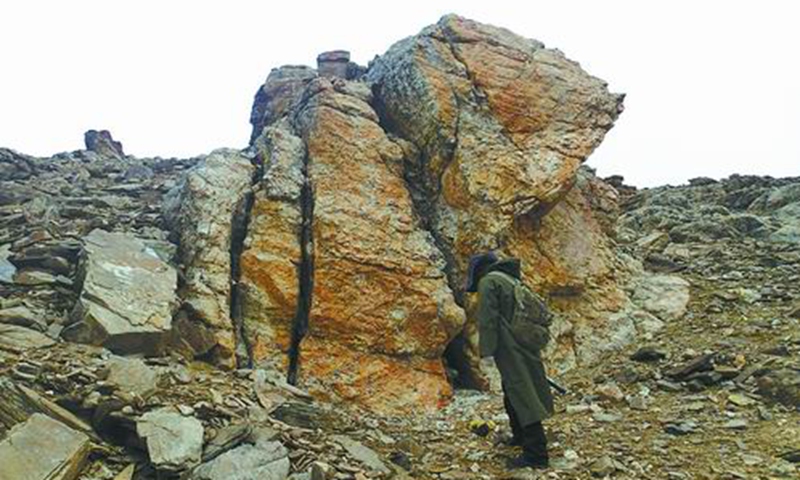Chinese research team finds vast lithium deposit in Qiongjiagang region of Mount Qomolangma

Photo: ScienceNet.cn
A Chinese scientific investigation and research team has discovered a vast lithium deposit in the Qiongjiagang region of Mount Qomolangma, according to a report by China Science Daily.
The lithium deposit might hopefully become the third largest after the Bailong Mountain site, in Northwest China's Xinjiang Uygur Autonomous Region, and the Jiajika lithium deposit, in Southwest China's Sichuan Province. It could also become the first pegmatite lithium deposit with industrial value in the Mount Qomolangma area, the report said.
The research team, affiliated with the Institute of Geology and Geophysics under the Chinese Academy of Sciences, found four mineral belts in the Qiongjiagang region in the summer of 2021 with a total length of more than 1,000 meters , Qin Kezhang, head of the research team, told the China Science Daily.
According to Qin, there are about 1.01 million tons of lithium oxide in the mine, based on what he described as "quite conservative" calculations. He also said that the average content rate of lithium oxide was about 1.3 percent.
Generally speaking, when the content of lithium oxide exceeds 0.8 percent, the lithium ore has industrial value, according to Qin. Of the 59 samples they collected from the site, 44 met the standards for industrial exploitation.
There are good mining conditions at the lithium deposit in Qiongjiagang area, Qin said. Particles of spodumene, a pyroxene mineral that is a source of lithium, are relatively large, about 10 cm to 20 cm, which are easy to extract. Transportation in the area is convenient and its geography is also favorable for industrial exploitation, according to Qin. He also noted that the area is far from the core of the nature reserve of Mount Qomolangma.
However, Qin said the project is still at the initial stage of "pre-study" of the lithium ore as currently they only know the distribution range and the types and contents of useful elements. From discovery to exploitation, a pre-study is needed to determine the location and general situation of the mine.
Qin remarked that scientists will conduct further investigation to determine whether the Qiongjiagang lithium deposit and its surrounding areas form a larger continuous lithium ore belt.



